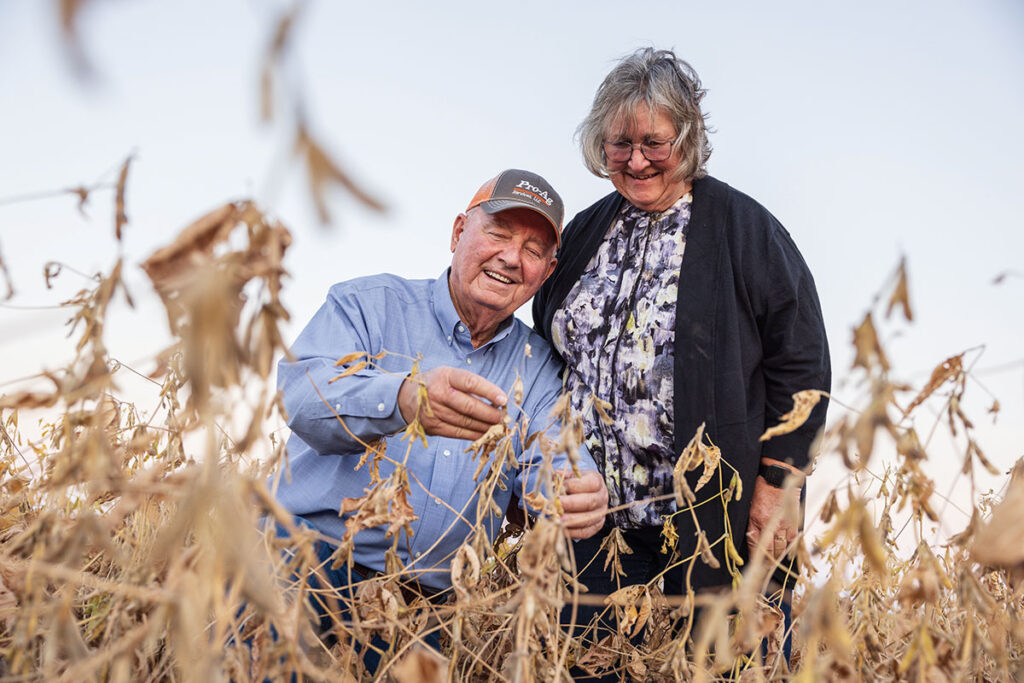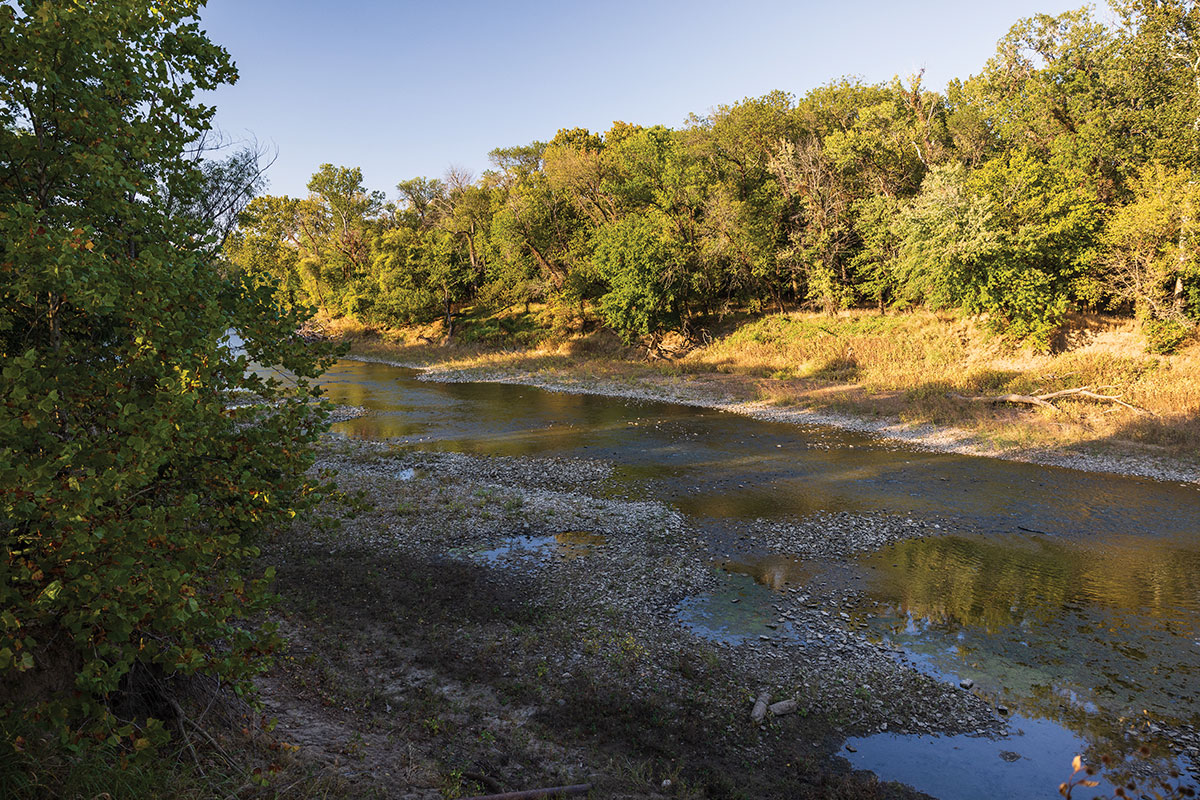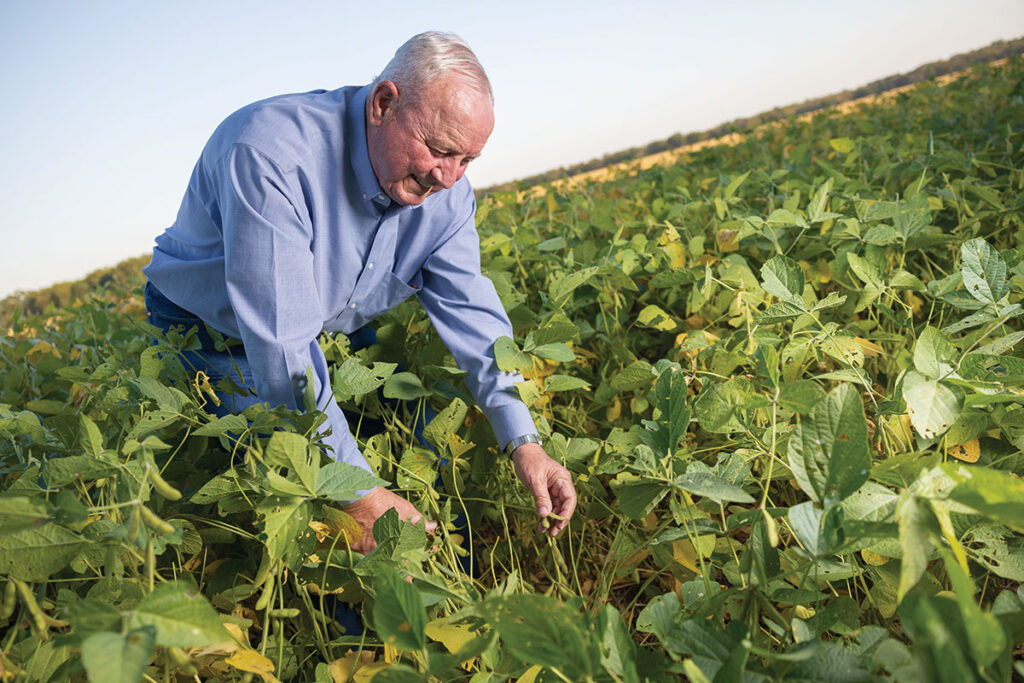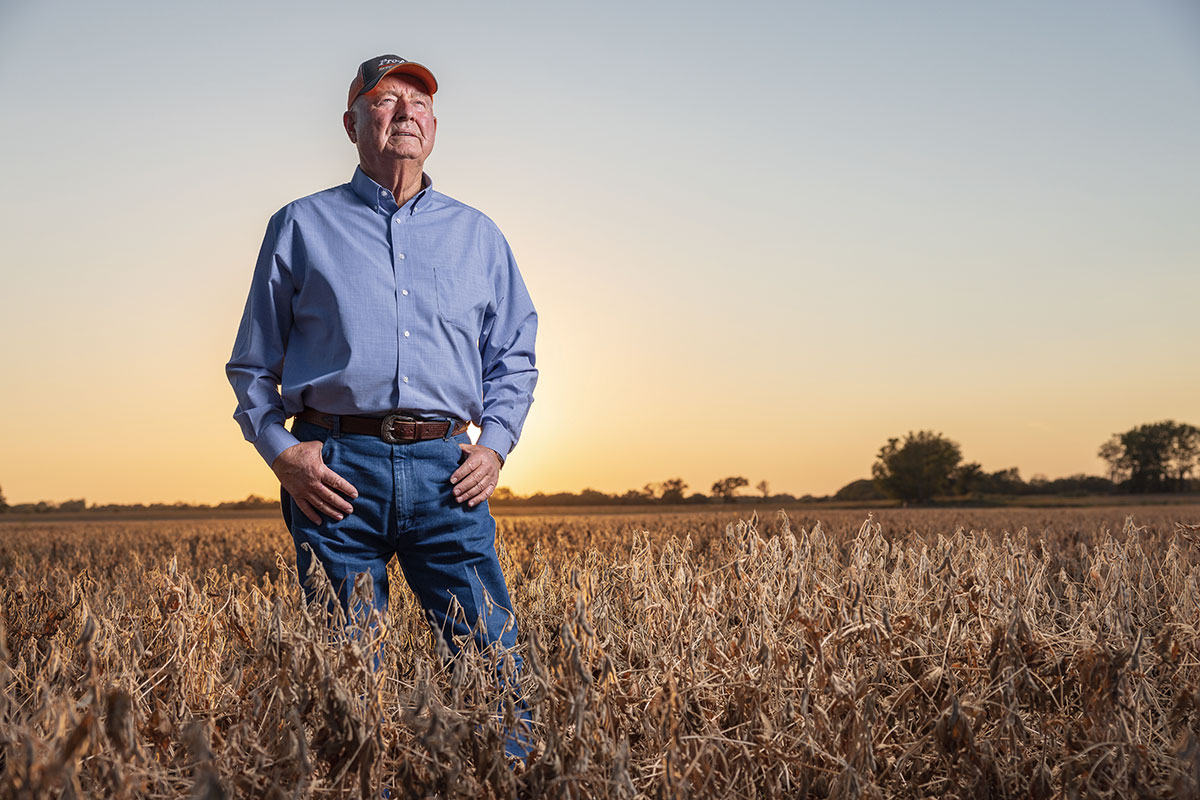Nowata County Farm Bureau members Scotty and Jo Herriman share their conservation journey that has taken them through droughts and floods while leading to a lifetime of learning, sharing land stewardship practices and recognition as the Oklahoma Leopold Conservation Award Winners.
Every farmer or rancher relies on the same basic ingredients that compel crops to grow, animals to flourish and daily life to continue.
From the soil where life sprouts to the sunshine that warms the earth to the moisture that refreshes and sustains both crop and animal, agriculture — and our way of life — relies on a precious balance of some of the most basic elements of nature.
However, when this short, simple ingredient list is thrown off-kilter, it can have disastrous results.

Nowata County farmers and Farm Bureau members Scotty and Jo Herriman have harnessed this delicate balance of soil, sun and water, which has allowed their family to grow corn, soybeans and wheat for decades on 1,500 acres of river-bottom land near the banks of the Verdigris River just outside South Coffeyville.
The Herrimans have a long history, known across the state, for being leaders in conservation practices as they work daily to manage the family farm’s soil health, water runoff, nutrient use and more, focusing on land stewardship.
Scotty has had a lifelong interest in implementing conservation practices on the family farm, including the use of terraces to direct water runoff from fields along with planting and maintaining grass waterways to absorb that runoff. With numerous years spent on his local conservation district board and involvement at the state level, Scotty understands the importance of implementing conservation practices to improve soil health and water quality.
“I’ve always had conservation on my mind,” Scotty said.
“Jo will tell you — after a big rain event, I want to go look at the water. We’re going to see how things are flowing, how the waterways are keeping up and if the terraces are maintaining.”
But in the summer of 2007, the Herrimans experienced first-hand an unprecedented “big rain” event: a life-changing flood that devastated their farmland and inspired them to rethink their approach to farming.
Scotty said that having farmed river-bottom land for nearly 50 years, the family has come to expect the nearby Verdigris River to rise and waters to crest onto their farmland from time to time. However, the 2007 flood proved to be exceptional.

“We’ve seen several floods here on the Verdigris River bottoms over the years,” Scotty said. “In 1976 we saw a 100-year flood. In 1986 we saw another 100-year flood, so we thought that was probably as high as it was going to get.
“But in 2007, it started raining north of here about 50 miles — we’re talking real rainfall of 20 or 21 inches.”
Scotty said that when water had to be released from an upstream lake in Kanas, the river that they farm alongside and live nearby raised 12 feet in a single hour.
The family moved their farm equipment to higher ground several different times as
they tried to stay ahead of the increasing water levels. They also found themselves scooping up items that were beginning to float away in hopes of preserving their farm for a quick recovery.
As whitecapped floodwaters kept rising, Scotty said the family hunkered down as long as they could, but eventually had to be evacuated from their home by boat.
“We had never gone through this kind of a flood in our lifetime, even though we thought we had seen it all,” Scotty said. “But this one ravished everything.”
Not only did their farmland and home flood, but floodwaters also overtook an upstream refinery, leaving a black line of oil on buildings and belongings as the waters eventually began to recede a full 10 days after floodwaters overtook their property.
The impact of the flood upon the Herrimans’ farm was quick and catastrophic. By the time the July floodwaters inundated their fields, the Herrimans had a wheat crop that was ready to harvest, corn was growing in their fields and they had plans to put in that fall’s soybean crop.
“It was a really depressing sight that we had to go through,” Scotty said. “We only got 13 acres of wheat harvested that summer.”
The corn crop was a total loss and the fields did not dry out in time to plant soybeans, leaving the family with only 13 acres out of the 2,000 they were farming at the time from which they were able to harvest a crop — and glean an income.
“We quite frankly didn’t know how we were going to get back on our feet from that,” Scotty said. “It was simply a matter of turning it over to God because we knew we could not survive on our own. So we truly believe he took us by the hand and carried us on. So we’re still farming today for that reason.”
Scotty said that for the first two years following the flood, he and Jo worked to recover and rebuild using the traditional tillage practices they had used for generations. Through those two full seasons of farming, the Herrimans realized something needed to change in the way they farmed that would enable them to use less labor and further increase their care for the land.
“We completely switched to no-till in 2010,” Scotty said. “We had gone through a year or two after the flood, and it just wasn’t getting any better. So we completely turned 100% around and no-tilled every acre we had, and had a good crop.”

Scotty said he had considered no-till before the flood, but he was worried the soils found in the family’s river-bottom fields would not work without turning the soil. However, leaning on his network of fellow farmers with whom he had connected through years of conservation efforts, the switch to no-till proved successful.
A few years later, the family took another step to transform their farming practices and added cover crops, a practice that incorporates planting crops that are not harvested, but are rather integrated into the family’s rotation for soil-health benefits.
“We started with cover crops in 2016,” Scotty said. “We learned about cover crops and learned they could hold the ground down. It armors the soil and it reduces runoff from fertilizers into the river — things that mattered to us. It really took hold.
“That has really brought us out of the fear of losing land, the fear of moving the soil off of site due to erosion. It has greatly reduced any of those hazards.”
Today the Herrimans also use strip tillage in their corn crop to precisely place a band of nutrients in the soil weeks or months before planting corn. Their corn crop is then planted in the exact same rows just above the band of fertilizer, ensuring that the corn crop has immediate access to the nutrients it needs while reducing nutrient runoff.
By transitioning their farming practices and integrating no-till, cover crops, strip tillage and more, Scotty said not only has the soil’s organic matter improved, but their fields now have either a crop, a cover crop or crop residue protecting the soil at all times.
“The no-till residue stays on the ground all the time,” Scotty said. “It is the armor that we need not only for hard rainfall, but also for the hot sun that’s beating down. And the nutrients that are trying to leave the farm don’t leave because of the residue that’s there. So that ground has improved over time because it’s taken on a better structure.”
The Herrimans have not only improved their own farm through decades’ worth of conservation efforts and a focus on land stewardship, but they have also taken time to share their experience and knowledge with fellow farmers and ranchers.
Scotty and Jo have hosted on-farm field days for groups of farmers throughout the years who are interested in the latest improvements in soybeans, grain sorghum, soil management, and more recently, cover crops.
“We would have field days where folks could come in and hear people speak about what the soil is like, how the structure is, here’s the root, look at the earthworms down here,” Scotty said. “So they could visually get tangible results of what we were trying to do. And that’s what the field days provided. It wasn’t something you’d read in the paper — no, they actually got to see it.”
In addition to hosting field days throughout decades, Scotty has spent years working alongside fellow farmers and ranchers both locally and across the state through his local conservation district and even serving two terms on the statewide Oklahoma Conservation Commission.
Scotty said he is committed to helping fellow producers, and especially younger producers, learn about conservation techniques and implement such practices on their own farms and ranches.
“Now that I’ve done a lot of this work, I actually like to seek out younger farmers that might look to someone that had some experience in that,” Scotty said. “I’m not going to push on them, but I’m certainly going to give them any help they need.”
In recognition of the Herrimans’ commitment to conservation, the family was awarded the Oklahoma Leopold Conservation Award by the Sand County Foundation at the Oklahoma Association of Conservation Districts’ Annual Meeting on Feb. 25. The award recognizes landowners who inspire others to consider conservation opportunities on their land.
With awards and accolades to their name, the Herrimans continue to push forward, pursue even more opportunities to care for the land and the farm where they raised their three sons, and support fellow agriculturalists working to improve their own land.
“It is an occupation that all farmers will tell you that it’s in their blood,” Scotty said. “You grew up with it. You love planting that crop, having an opportunity to see it grow and reach that harvest, which we’re looking forward to as farmers. It’s an old cliché, but, I mean, it just is — it gets in your blood.”
Although Scotty and Jo may miss the smell of fresh-tilled soil and seeing fields of plowed earth stretching toward the tree line, today they know their soil is protected at all times by that layer of plant growth or crop residue that Scotty refers to as “armor.” That armor is helping the Herriman family continue to use the God-given ingredients of soil, water and sunlight to care for the land and sustain their family farm into the future.

